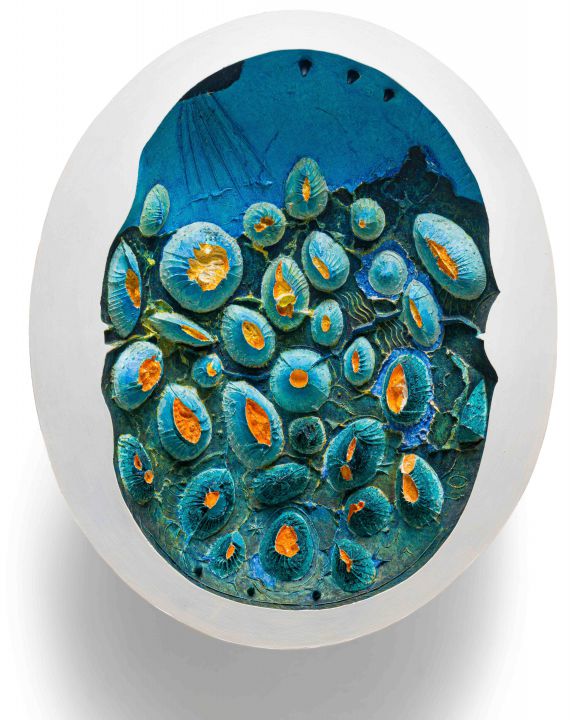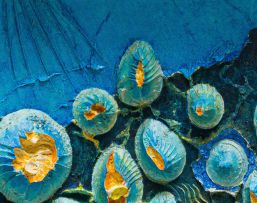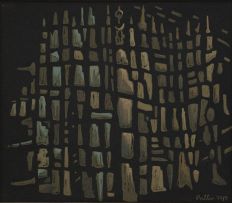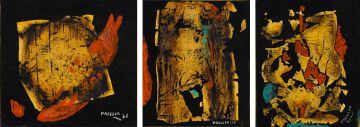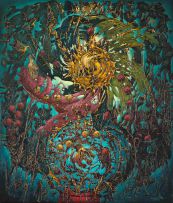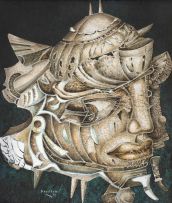Modern, Post-War and Contemporary Art, Decorative Arts, Jewellery and Fine Wine
Live Virtual Auction, 8 - 11 November 2020
Modern, Post-War and Contemporary Art Part II
About this Item
Notes
The astonishing Craters, one of Preller's famed, late-career intaglios, is curious, memorable, and yet barely documented. Still in the artist's studio when he died in 1975, the work was sold at Volks Auctioneers in November 1977, along with numerous masterpieces that had very briefly passed into the hands of Guna Massyn, the artist's partner, before he also tragically died in a car accident. Bathed in midnight blues, dark violet and shadowy greens, bursts of blazing yellow suggest a searing subterranean heat under the work's surface. Craters certainly stands apart in the context of Preller's intaglios which, with the exception of the mesmerising and experimental Apple I, Apple II and Original Sin (all 1969), focused on kouroi forms and disembodied heads. Rather, from within its deeply concave fibreglass shell, the work at first evokes a hellish and mutilated landscape of burning pits and exploded trenches that light up an otherwise dark sky. Seemingly out of place in the artist's late-career iconography, which became increasingly classical, mysterious and Mediterranean, Craters conjures wartime carnage. If so, it must be one of the very few instances of the artist revisiting his World War II imagery late in life.
Preller, of course, had joined the South African Medical Corps in 1940, served in the frontline surgeries on the North African Campaign, and languished in prisoner-of-war camps in Italy and Egypt before being repatriated late in 1943. The images he painted on his return, particularly between 1943 and 1947, were inevitably wrapped up in his recent experiences of inhumanity, panic, divinity and recovery. Craters brings to mind a number of milestone works from this period, albeit in different ways. It has something closely in common with the unforgettable Revelation (1945), for instance, which personified the landscape, and transformed swathes of lush tropical forest into ripped, torn and pink-dripping flesh (figure 1). In the present lot, moreover, the dark fang-like forms that protrude from the sky recall the drifting silhouettes of paratroopers that Preller found so potent a symbol (figure 2). Thematically, Craters also harks back to one of Preller's most beautiful and poetic wartime pictures: Fleurs du Mal (figure 3). In this iconic work, Preller conflated the appearance of swabs and wounded flesh with petals and butterfly wings, creating a powerful image of regeneration, and exploring the 'paradox of beauty in the midst of horror'.1 The feat is repeated in Craters, some 25 years later, as Preller reimagined a bombed landscape using dazzlingly beautiful explosions of gold and flashing lavender.
1. Esmé Berman and Karel Nel (2009) Alexis Preller: Africa, the Sun and Shadows, Johannesburg: Shelf, page 87.
Provenance
Volks Auctioneers, Pretoria, 18 November 1977, lot 92, and thence by descent.
